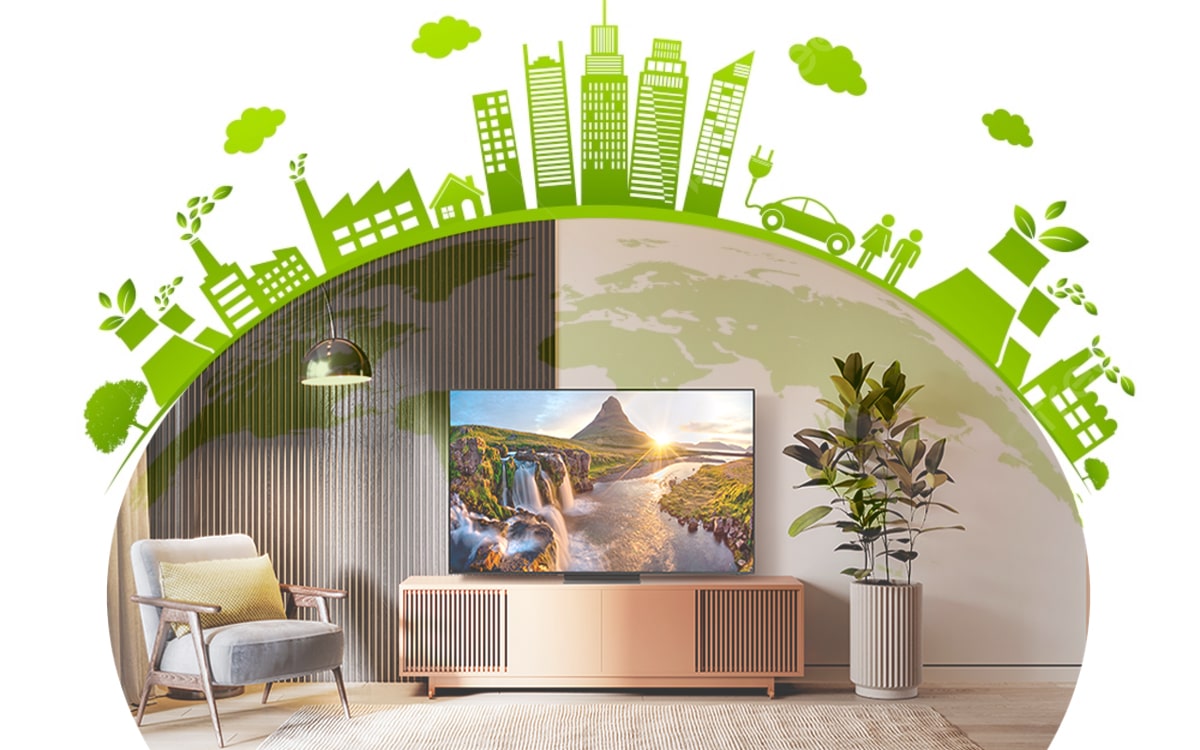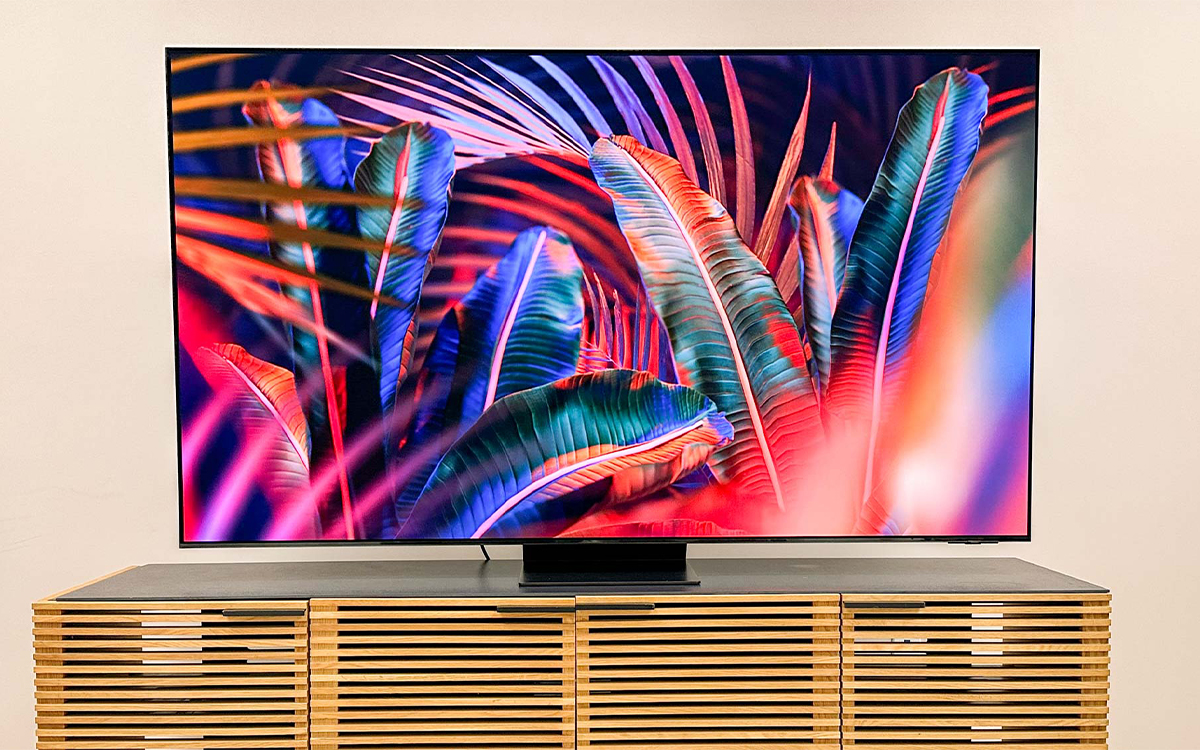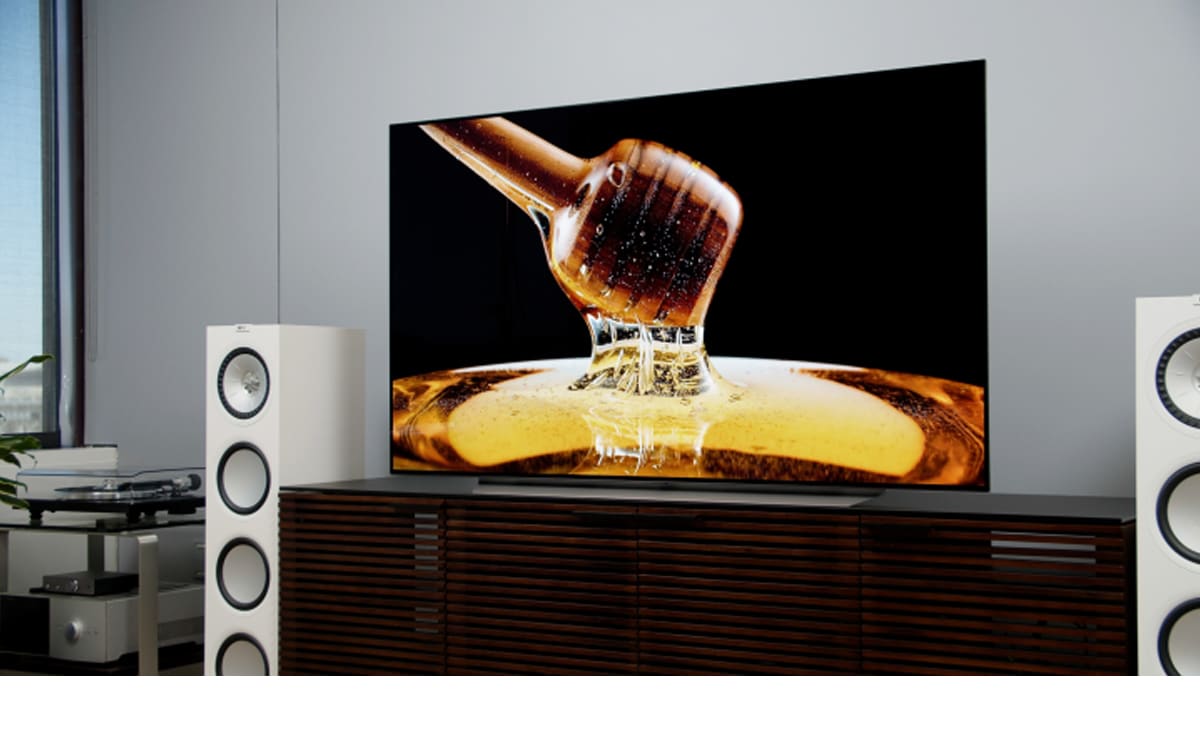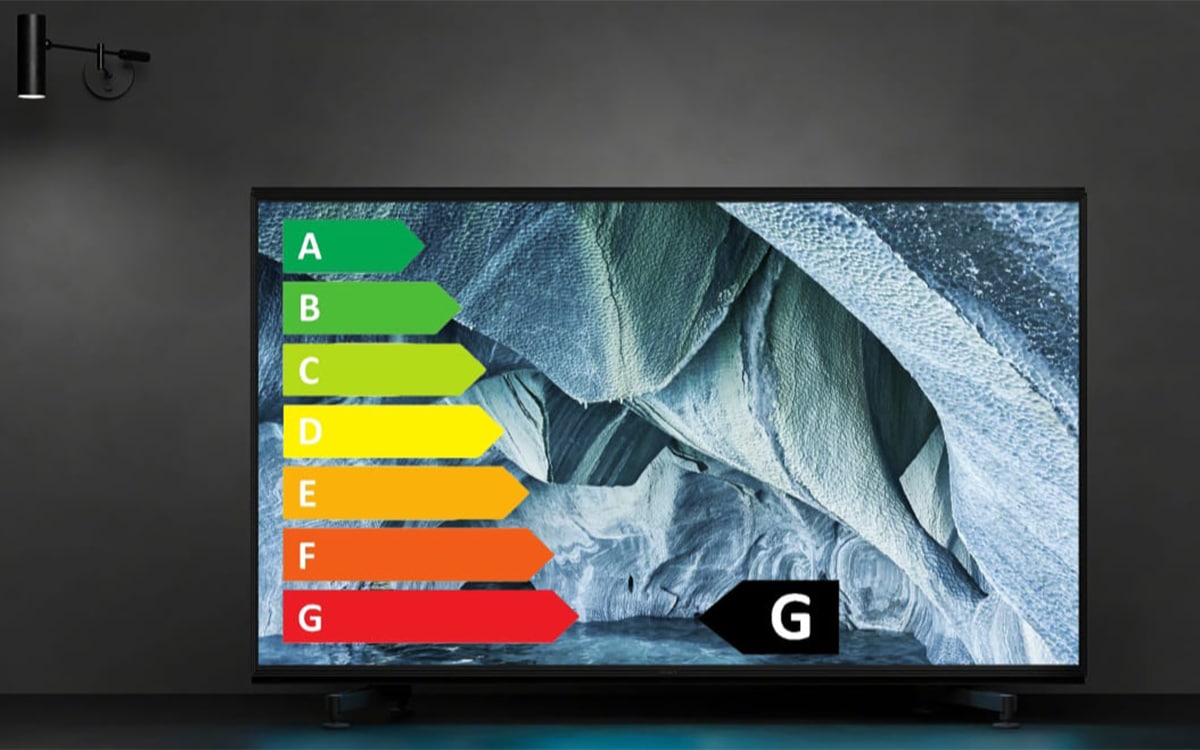The only problem is because TVs can vary in so many ways. It can often be a challenge to grasp just how much energy a single TV is ever using. In fact, we’re willing to bet you’ve found your way here because you want to better understand TV energy usage, so you can save a little bit extra on your bills.
If so, you’re in luck. Our Reliant tech experts have over 60 years of experience with TVs, and with their help, we’ve put together this definitive guide to TV energy use. So you can rein in your energy bills, and save yourself a lot of extra money. Let’s dive right in!
Why Does Energy Usage Matter?
The best way to imagine the importance of good energy usage is to consider how energy is produced. Energy production methods have changed massively over the generations. But one thing has always remained true. They have a significant impact on the environment. In fact, energy production plays the biggest role in leading global warming!
As such, it’s crucial to make the most of every bit of energy we have. Wasting energy has a direct impact on our environment! It also has a direct impact on our wallets. Because of the significant effort needed to generate electricity, it can often cost quite a lot. Most energy providers will adjust energy bills depending on how much energy you have used specifically. This means that it’s in your best interests to not waste electricity. It will help to lower your bills, and help you save money.
Energy usage is highly important to pay attention to. Energy isn’t cheap, and production of it has a significant impact on the environment. You’ll want to lower your usage however you can!
Considering how often, and for how long we use our TVs, it’s important that we try to cut down on energy usage in as many ways as possible. This is why it’s so important to keep a good measure of how much power your TV is using at any given time.
How Much Energy Do TVs Consume?
This is obviously the most common question asked when it comes to TVs and energy usage. Unfortunately, it’s not easy to find a single answer that suits all situations. This is because the amount of energy consumed by a TV will depend on a number of factors. Some factors include the size of the TV, how long you use it, and how bright the display is. We’ll explore some of these factors in more detail a little later on.
For now, we can say that, on average, it costs around 50p to run a TV every week. This is the average cost for the most popular screen sizes, watched for around 4 hours each day. Again, this price could very massively differ if you were to use the TV for longer each day, or if you were using a larger model.
How Do You Know If A TV Is Energy Efficient?
Because energy usage can differ so massively from TV model to TV model, it’s worth being able to identify an energy-efficient TV at a glance. Especially if you’re in the market for a new display.
The most effective way to identify an energy-efficient TV is to look out for an energy rating label. These labels should really need no introduction. If you’ve ever browsed home appliances and electronics, both in-person and online, you’d have no doubt encountered them. They’re most recognizable thanks to their colour-coded rating system. Appliances that are rated higher are considered more efficient, while appliances rated lower are the least efficient. You’ll want to look for a TV that’s close to an “A”-rating rather than a “G”-rating.
If you’re looking for the most efficient TVs on the market, you’ll want to look for a strong energy rating. An “A”-rating indicates high energy efficiency. For lower bills, and lower environmental impact.
These labels give you a quick insight into the efficiency of each TV, so you can make an informed decision in seconds! They also include plenty of supplemental information, such as the energy usage in kWh for every 1000 hours of use. This helps you to choose between two models you might be torn on!
These energy rating labels are beneficial in a number of ways. For both consumers and for the planet. Consumers prefer to opt for the most efficient models on the market. As such, manufacturers are incentivised to make their products more efficient, in order to increase consumer interest!
What Factors Can Increase TV Energy Usage?
As you know, TVs can differ in a multitude of ways. From screen size to resolution, and even display type. This means that some TVs use more electricity than others. But what impact do different TV factors have on energy usage? Let’s find out.
Display Type
The type of TV display you use can actually have a direct impact on its total energy usage. Different displays operate in different ways, and as such, use electricity in varying amounts.
OLED
OLED TVs are considered to be some of the most efficient on the market. The reason for this is down to how OLED displays work. Most TVs make use of backlights that shine through the display panel of the TV to project the image outward. OLED TVs actually lack backlights entirely. Instead, the pixels of an OLED display not only render images but provide their own light.
Because there’s no need for a backlight on an OLED TV, theoretically, it can actually use much less power. No matter what content you enjoy on a backlit TV, the backlight is always emitting light, until it’s powered off. While you can lower the brightness, the amount of light emitted always remains consistent. This means that backlit TVs always use the same amount of electricity, depending on brightness.
OLED pixels can turn off completely when necessary in specific scenes, which naturally results in less energy being used. There is not a consistent amount of light always being emitted by an OLED display. It entirely depends on the content.
QLED
Naturally, because QLED TVs make use of a backlight, they end up using much more electricity than OLED TVs. When used for the same amount of time, a QLED TV will usually end up consuming 15% more electricity than an OLED TV.
Again, this is because the backlight of a QLED TV is always maintaining a specific level of brightness. Unlike an OLED TV that is always varying the amount of light, it’s outputting from moment to moment.
QLED TVs also consume more electricity thanks to how they operate. QLED TVs make use of quantum dots that combine together in varying ways to emit light of specific colours. This makes them more vibrant and colourful than other competing TVs. However, because of the special way in which they operate, they end up using much more electricity.
LED
Unfortunately, it’s a very similar story when it comes to LED TVs. LED TVs are some of the most popular and basic TVs on the market, and they make use of a backlight to project images outwards.
However, LED TVs do tend to consume much less than QLED TVs. This is because they make use of very standard display technology that has less demand for power.
Backlit TVs don’t consume quite as much electricity as they once did. What makes QLED TVs such high-energy consumers is their unique display technologies. Quantum dots make use of a lot of electricity to display images.
As well as this, backlights have improved massively across the years, to become more efficient while still producing great brightness levels. QLED TVs end up consuming more electricity thanks to their unique display technology.
QNED
QNED TVs aren’t too dissimilar to QLED TVs. They make use of quantum dots to produce more vibrant and rich colours, which of course leads to higher energy consumption. However, what sets them apart is the fact that QNED TVs include a “NanoCell” layer that can absorb excess light from the backlight. This improves visual contrast in real time.
Unfortunately, the inclusion of the NanoCell layer also means that QNED TVs use up a little bit more electricity than other TVs.
Screen Brightness
Much of the energy used by a TV is responsible for creating the light that allows us to see the on-screen image. If you were to crank the brightness up, the amount of energy being used would also increase. On the other hand, lowering the brightness results in less electricity usage.
Because of the impact of TV brightness on energy usage, most TVs will come with some kind of brightness control. This allows you to set a specific brightness level to match your needs.

Screen Size
We all love massive TVs. They make watching film and TV truly incredible, by offering great panoramic views. The only problem is, the larger your TV is, the more electricity it will need to consume. Larger TVs, like our popular 65-inch tv or even the mammoth 98-inch tv, will need to route more power to the screen in order to generate an image that takes up the entire length.
If you’re hoping to cut down on energy usage, you might want to opt for a TV that’s smaller!
Smart Features
Smart TV features can also have a direct impact on energy consumption. The more smart features your TV is capable of, and the more powerful its processor is, the more energy it will use.
If there are any smart TV features you don’t make use of, such as upscaling, then we’d recommend turning them off. This can cut down on some of the energy being used by the TV as a whole!
Resolution
Continuing on from screen size, the resolution also plays a large role in the energy consumption of any TV. Images of higher resolution require much more electricity in order to be displayed on screen. This also applies to HDR imagery. HDR is a video signal that provides more detailed information for your TV to more accurately replicate images. In order to get all of the details correct, your TV will need to put in a little bit of overtime!
Luckily, resolution does not have too big of an impact on energy usage. So you can still enjoy 4K and 8K films, without worrying about any rising costs!
Refresh Rate
The refresh rate of a TV refers to how many times the screen can refresh its image every second. When the refresh rate is higher, motion appears much smoother, and much truer to life. The trouble is that refreshing the image so quickly requires a lot of power to be used by the TV.
When enjoying content at higher refresh rates, such as gaming, you’ll naturally be consuming more power.
Sound Features
So often, sound goes unmentioned when it comes to discussing TV technology. However, it cannot be understated the impact that sound has on the TV experience. Including the amount of power used by any specific display.
TVs can vary massively from the kind of sound systems they use. Some come with your run-of-the-mill barebones speakers, while others have immense dynamic sound systems that can fill a room with audio. However, the more sophisticated the sound system is, the more power will be consumed. Directional audio, a very popular sound technology, has a particularly high impact on energy use. The TV’s processor will need to use more power in order to accurately move sound around in time with the on-screen action.
Length Of Use
And of course, the amount of time you use your TV will also directly impact how much energy you’re using. The more you use your TV, the more energy it will consume.
How Can You Reduce A TV’s Energy Consumption?
As you can see, the energy consumption of a TV is affected by a massive number of factors. Because of this, it can seem like a total uphill battle to keep power usage down. Luckily, there are quite a number of things you can do to reduce the amount of electricity used by your TV. Let’s take a look at them.
Lower The Brightness
It’s no secret that high brightness levels result in higher energy consumption. In order to pump out higher levels of light, a TV’s light source will need to work a little bit harder. To facilitate this, it will need to draw upon more electricity.
To lower the amount of electricity being consumed by your TV, you can lower the brightness yourself. Luckily, this is very easy to do. All you need to do is grab your TV remote and access the brightness settings menu.
Lowering screen brightness is one of the most effective ways to reduce TV energy consumption. It also reduces eye strain and extends the life of your TV. It’s worth lowering your TV’s brightness by a few increments.
We’d recommend dropping the brightness of your TV down by at least two increments from where you normally have it. This alone can help to save plenty of energy. If you ever need to crank the brightness up, such as while watching a dark and moody horror film, then you can absolutely do so. We’d just recommend that you lower the brightness again when you’re done!
Lowering the brightness isn’t just great for shrinking your energy bills. It also has added benefits for your health, as well as the health of your TV. Lower brightness reduces the strain on your eyes. If you ever find yourself feeling tired after a Netflix binge, it’s likely that the brightness was set too high. Lowering the brightness also reduces the strain placed on the TV. This can extend the life of backlights, and even prevent screen burn-in on OLED displays!
Lower The Contrast
It’s often forgotten just how important contrast is to a full TV experience. With greater contrast, images appear richer and far more crisp. The only problem is, in order to create such high contrast, some TVs need to use much more electricity.
Reducing contrast can reduce the amount of electricity being used up by your TV. You can increase or decrease contrast on your TV as and when you need it via the system menu. This ensures certain content still looks great!
We’d recommend turning contrast down whenever you’re using your TV for more basic content. Live TV, the news and other certain shows won’t benefit from higher contrast quite like films and sports will! You can easily adjust contrast settings as needed, to suit any type of content you’re enjoying.
Use Auto Sleep Timers
Ever fallen asleep in front of the TV, only to wake up in the middle of the night, with the screen still on? It’s a remarkably common scenario! But unfortunately, it can have a noticeable impact on your energy bills. Obviously, when you’re asleep, you’re not making full use of your TV, thus, it’s wasting energy if it’s left on.
If you’re prone to nodding off in front of the box, then we recommend making use of the TV’s built-in sleep timer. This timer is programmed to kick into action and shut your TV down after a certain period of inactivity has elapsed. It ensures that your TV won’t ever be left idle, wasting electricity for hours at a time.
This function is often known under different names depending on the TV model you’re working with. It’s worth taking a look at the settings for the function, so you can alter it to your needs. You can set the TV to automatically shut down after 30 minutes of inactivity, or after entire hours of inactivity. It all depends on what you want from your TV. Or how prone you are to falling asleep in front of it!
We recommend making use of any sleep timers built into your TV. These can ensure that your TV is never accidentally left on, to waste electricity. If you often fall asleep in front of the box, they’re worth using.
This is a non-intrusive function that prevents accidental energy waste and also protects the health of your TV.
Turn It Off!
As we highlighted above, leaving your TV on when it’s not in use is a significant waste of valuable electricity. But it’s remarkable just how easy it is to accidentally leave your TV on!
If you ever need to step away from your TV, even for just a few minutes, then we recommend that you turn it off. This way, if you don’t step foot back into the living room for another few hours, you won’t discover that you’ve left the TV on the whole time!
Doing this enough times will create a good habit, and soon turning the TV off whenever you step away will become second nature.
If you often need to step away from your TV, then, again, we’d recommend making good use of sleep timers!
What Happens When You Leave A TV Screen On?
Obviously, leaving your TV’s screen on is a significant waste of electricity. Your TV has no way of knowing that you’re not watching it, so it will continue using power as long as it’s left switched on. But that’s not all.
Leaving your TV on for extended periods of inactivity will place a real strain on a number of the TV’s components. The backlights, in particular, will have to work extra hard, pumping out the correct amount of light for as long as the TV is left on. If placed under enough of a strain, or left on for too long, a backlight can end up burning out. This will impact its ability to produce light, which will leave images looking dull. It’s also not cheap to get a TV’s backlights replaced!
Leaving an OLED TV on can be particularly disastrous. As you know, OLED pixels produce their own light. This means that leaving an OLED TV on could put the pixels under the same amount of strain as a backlight. Each of the individual pixels could then burn out at their own rate. This results in the dreaded screen burn-in, where a static image appears as though it has burnt into the surface of the TV’s screen.
Leaving your TV on when not in use does more than just waste electricity. It also significantly shortens the device’s expected lifespan. If you want your TV to last, it’s worth getting to the habit of turning it off!
This is why it’s so important to turn your TV off whenever it’s not in use. It will save you hundreds of pounds because you won’t need to worry about unexpected repairs!
Upgrade To A More Efficient Model
If your TV is significantly old or has a low energy rating, then it might be worth going for an upgrade. TVs are now designed to use much less power than they once did. Upgrading to a new TV can thus help you to save countless hundreds of pounds.
Of course, your initial worry might be that the upfront cost of a new TV is high. But, it’s worth remembering that a newer and more efficient TV will help to save you hundreds of pounds in energy. In no time, money saved from your energy bills could help you to recoup the costs of a new TV.

Use Energy-Saver Modes
A number of TV models have been produced with energy efficiency in mind! We’d recommend looking for a TV with some kind of energy-saving mode. This mode adjusts a number of your TV’s presets to reduce the amount of power it uses. These include things such as lowering contrast and brightness and deactivating post-processing effects.
If your TV has an energy-saver mode, we recommend turning it on. This changes some of your TV’s settings to lower the amount of electricity needed. Luckily, it’s easy to toggle it on and off for certain content.
If your TV does not have an energy-saving mode, we’d still recommend playing around with its settings. Deactivate post-processing effects and special features that you don’t make full use of. This ensures that power doesn’t get wasted on functions that you’ll never even touch!
Should You Unplug Your TV At Night?
One tip that’s often given to TV owners hoping to cut their energy usage is to unplug the TV overnight. For the most part, doing this can save some electricity, but not a dramatic amount.
When you press the “Off” button on your TV remote, it’s important to note that the TV isn’t technically fully switched off. Instead, it is sent into a kind of “Sleep” mode. Sleep mode uses a small amount of electricity so that the TV can remain alert to any potential input from the remote. Should you tell the TV to turn back on, it will be able to quickly reactivate and start displaying your content.
Unplugging your TV from the wall ensures that the TV is fully shut down. This does result in lower energy usage, but it does mean it will take longer to turn it back on later!
However, it’s worth noting that your TV only uses a small amount of electricity while on standby. So unplugging it from the wall will only save you a bit of money.
Can A TV Be Left On For 24 Hours?
We’d really recommend that you don’t ever leave your TV on for 24 hours without stopping. For one, it would simply be a waste of electricity. Operating consistently for a period of 24 hours would put an incredibly significant strain on a number of your TV’s components. Most notably, the backlight would be at high risk of burning out.
It’s also unlikely that you’d be able to make full use of the TV throughout those 24 hours. You’d be putting a significant strain on your body and directly affecting your sleep.
Even if you were to somehow make full use of a TV for a 24-hour period, we would still recommend against it. It puts far too much of a strain on the TV itself, which shortens its lifespan, and wastes your money!

Frequently Asked Questions
Why Does Energy Usage Matter?
It’s important to be aware of how much energy you are using at any one time thanks to the impact that energy production has on the environment. Generating electricity is very resource-heavy, so it has a massive carbon footprint. Wasting electricity is directly harmful to the planet, and also simply costs you more. If you want to spend less on your bills, you’ll want to monitor how much energy you are using!
Does TV Energy Rating Matter?
Absolutely. If possible, you should seek to find a TV with the strongest energy rating. TVs with higher energy ratings use much less electricity and thus have a smaller impact on the planet and on your bills. If you want maximum efficiency, we’d recommend any TV rated “A”. “G” is the lowest energy rating possible for a TV, so it is best avoided!
What Appliances Consume The Most Electricity?
Of all appliances, easily one of the most power-hungry is the heater. Heaters use up a significant amount of energy, in order to fill a space with a particular temperature. In fact, any appliance that is designed to generate heat can be expected to use up a lot of electricity. Clothes dryers, and kettles can especially use up a lot of power. Air conditioners and refrigerators similarly use up a lot of power.






0 Comments